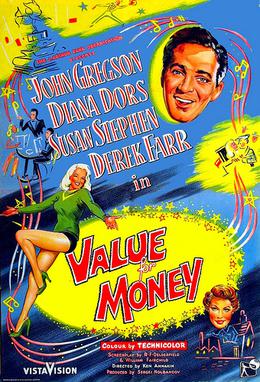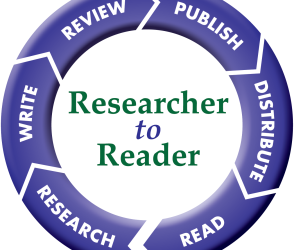
There has recently been a good deal of discussion of article processing charges (APCs) for Gold open access (OA) journals — what’s fair, what’s acceptable, and what’s sustainable. In the midst of this, eLife has released its 2013 financials, which give an indication of what a premier OA journal article costs to produce.
Based on these financial reports, it cost eLife approximately US$14,000 to publish an article in 2013.
If eLife had needed to cover their costs of publication entirely via an APC in 2013, the APC would have been in line with estimates that have in the past proven controversial, such as Nature’s assertion that it would cost them in excess of US$10,000 to publish an article as Gold OA. As we’ve seen, eLife has positioned itself as a competitor to this echelon of journals.
For those of us in publishing, this may not come as a surprise, as eLife is a sensational-looking online journal with nice experiments, strong editors, and great marketing. In fact, given that eLife appears to be doing the majority of the things publishers do, you’d anticipate their expenses would be on par with the likes of Nature. Unlike Nature and larger OA publishers, eLife has only one journal, so infrastructure and overhead costs (lights, heat, HR, legal, finance) all accrue to that one product. At a nominal rate of 30%, this could explain why eLife’s costs are higher than Nature’s estimate.
The overall gestalt of eLife’s financials (both their audited financials and their 990), combined with a rate of publication in 2014 that is nearly double 2013’s rate, suggests that eLife will be taking large portions annually out of the US$30 million in funding commitments it has received. At the per-article rate calculated above, US$8 million could be drawn down from those commitments this year alone.
Data points like these are worth adding to discussions of APCs and sustainable OA. Given author behavior and what’s emerging on the landscape as various entrants adopt the Gold OA business model, it seems reasonable to think that a wide variety of APCs will develop over time. The market for Gold OA is evolving and maturing, responding as authors vote with their feet and as various approaches to competition and value creation emerge on the market.
Discussion
36 Thoughts on "How Much Does It Cost eLife to Publish an Article?"
I am assuming that you have calculated the average cost per article. Presumably there are some economies of scale here and so that average cost will decline if they increase the number of articles published as they did in 2014.
David: I do not think economies of scale apply. If they publish more articles at a cost of $14K per article the fund simply runs out faster. Remember with gold OA there is no revenue stream. The fixed costs stay the same. Please correct me if I am in error.
You’d probably see a mixed bag. Some costs are fixed (the Editor in Chief’s $150K salary for example). So if you published more articles, each article’s share of that salary would be reduced. Other costs for services associated with each article, may stay the same or in some cases see a reduction due to economies of scale. Also worth considering is that if the journal accepted a lot more papers, its perceived prestige would drop, and it might see a lower rate of submission, which would also cut costs.
Perhaps this “sticker shock” will have some OA advocates rethinking whether traditional publishers were really ripping off libraries after all with their subscription prices.
Harvard expends just 3% of their library budget on journal subscriptions, which amounted to only 8% of their materials budget. This is what they called “unaffordable.” It’s an interesting perspective, especially since they spent 33% of their library budget on staff and salaries.
See https://chronicle.com/article/Spending-by-University/148025/ + http://isites.harvard.edu/icb/icb.do?keyword=k77982&tabgroupid=icb.tabgroup143448 and do the math.
To be fair though, that 3% is kind of a fuzzy number. I calculated it based on this article which puts Harvard’s annual spend at $3.5M, which is probably too low:
http://www.theguardian.com/science/2012/apr/24/harvard-university-journal-publishers-prices
But it’s unclear how carefully most libraries do their accounting, and many things fall under the term “serials budget”, and many journals are purchased with funds from different areas, so it may be hard to get an overall number.
But if you really want to get granular, start thinking of how important journals are to researchers on a campus, and then compare the spend on journals to the overall university spend every year. I’m willing to bet that many spend more on groundskeeping than on journals.
Harvard itself puts the expenditure as a number approaching $3.75 million. http://isites.harvard.edu/icb/icb.do?keyword=k77982&tabgroupid=icb.tabgroup143448
But they specify that this number only accounts for costs from some number of publishers who sell bundles of journals. No clear way to determine what percentage that is of the overall spend.
Reading more carefully–Harvard in 2012 complained about the big publishers charging them too much for their journal bundles ($3.75M). They did not identify specific publisher, nor did they state what percentage of overall journal purchasing this represented. But, by looking at the numbers in the Chronicle, one can see what a small proportion that $3.75M is of overall spend. It would be interesting to know what percentage of Harvard’s total journal collection those collections make up.
Statement of Stuart M. Shieber before the House Science Committee March 29th, 2012
https://blogs.law.harvard.edu/pamphlet/2012/03/30/statement-before-the-house-science-committee/
“… the university subscribes to tens of thousands of serials at a cost of about 9 million dollars per year.”
cf. also notes on http://cyber.law.harvard.edu/hoap/Open_Access_(the_book)
https://tagteam.harvard.edu/hub_feeds/1998/feed_items/135763
and “Is the pot calling the kettle black?”
http://blogs.law.harvard.edu/pamphlet/2012/02/25/is-the-pot-calling-the-kettle-black/
According to your own Quote, those collections (2012 price 3,75 mio $) made up in 2010 just over 20% of all periodical subscription costs (in 2012 the % would have been more, due to hyperinflation in Journal Prices). Periodical subscription costs, in turn, amount to about half of total materials expenditures (cf. the 10% figure mentioned in relation). As materials expenditure was 36% of total library expenditures in 2012-13, serials expenditures is somewhere between 15%…18%, not 3% as you claimed. The 9 mio $ mentioned above were probably for 2011-12, not 2012-13. I don’t have access to current ARL statistics, you would have to consult these to get data that refer to the same time. For comparison, see here full figures from 1996-1997: http://hul.harvard.edu/assembly/handbook/hb14.htm
At that time, Serials expenditures was 42% of materials expenditure, and 10% of total library expenditures (materials expenditures was 25% of total expenditures). This shows that Serials eat up more and more of the total Budget.
I don’t follow your math. In 2012-13, Harvard spent $42 million in their materials budget. Assuming journals were $10 million (increasing the $9 million figure you quote Shieber giving in 2012, just to be safe), then journals are 25% of the total materials budget, and 9% of the total library budget for Harvard. It’s still a fraction of their salaries expenditures, and where the other $32-33 million in the materials budget is going is worth pondering.
I’ll ask Stuart Shieber to enlighten you. Your 3% math was obviously way offmark. I guess, it should cause no problem to you to get hold of official ARL statistics instead of pondering wild guesses.
Please note the link above to official ARL data. I’m using that combined with Shieber’s own words, which you nicely added to the discussion, to get to my math.
The numbers still read a bit like an Amazon earnings report, where there’s no clear statement of what’s what.
The complaint, as I read it, is that some unnamed group of major collections of thousands of journals from the major publishers costs $3.75M and that is unaffordable. Looking at the overall budget numbers as Kent has done, that seems a fairly small portion of the total library budget, but it’s hard to tell. Which collections exactly are these, how many journals are in them? What percent of the total number of journals the library subscribes to are included? What is the cost per download of these “unaffordable” journal bundles as compared with the other journals in the library’s collection?
What else does “Serials expenditures” include other than journals? Does it also include newspapers, directories, dictionaries, newsletters, etc.? How does demand and usage for Serials compare to demand and usage for other types of materials? Is it increasing? If so, shouldn’t that lead to an increased spend?
It would be interesting to know just how much a high rejection rate contributes to this big number.
It seems logical that there’s a cost to running the peer review process for an article (maybe $400?), with the main expenses being salary for editorial office staff and other overheads. Since the APC is only charged to accepted papers, those authors have to cover the review of (1/acceptance rate) articles.
If eLife’s acceptance rate is 5% and we go with the $400 figure above, they’re spending $8000 on peer review to get one accepted article. The remainder is typesetting, hosting, marketing etc, and is incurred only for accepted papers.
[this, by the way, is why I think independent peer review is so important: by pre-filtering papers, it raises journal acceptance rates and could substantially reduce APC’s]
A recent study (PEER – Publishing and the Ecology of European Research) (co-funded by the European Union) arrived at much lower estimates. In its final presentation (http://www.peerproject.eu/introductory-final-presentations/), in particular on slide 17, average costs amounted to a couple of hundred euros per article.
I suppose the method of calculating costs differs in the PEER study?
I don’t know if it’s a matter of how one calculates costs versus what is being offered by the various journals in question. eLife is an elite journal with a highly paid editorial staff and a state-of-the-art publishing platform. They’re doing a lot of experimentation with things like peer review and presentation of materials (the eLife “lens”). All of these things cost money and speak to the often contradictory demands that are put on journals. We are told to constantly innovate, to build in new technologies like social media, altmetrics, API’s, facilities for text- and data-mining, yet at the same time we are told not to dare raise prices to pay for all that innovation.
David, is it your experience that your customers are encouraging you to add social media features, API’s, etc., or is that pressure coming from consultants or other directions? I ask because, as a customer, I am often frustrated when publishers justify price hikes on the basis of (among other things) “value-added” features that don’t add much of the value my patrons really need — or that do add real value, but value that I would have chosen to forego in exchange for a smaller price increase, given the choice. But I don’t know how typical my viewpoint is on this issue — it’s possible that you’re getting the opposite message from many other customers.
Not speaking for David, of course, but in my experience the calls for new features are ENDLESS. It’s also typical to read grant proposals from libraries in which publishers are not derided for adding things that librarians now propose to do.
Rick, this is a superb question, one I struggle with regularly.
Publishers are besieged with requests/demands for new features, technologies, etc. These come from many fronts. Some are from readers, some from authors, some from our society publishing partners, some are from technology vendors trying to sell you on their products, some from advocates for a particular cause, some from librarians and some arise internally as we are trying to improve our products.
As you note, some of these technologies are incredibly valuable and broadly used–COUNTER, DOI’s, search engine optimization for better discovery, export of references in useful file formats, etc. Others less so (most HighWire journals added direct links to export papers to social media sites like Facebook, Twitter, etc., and these are, at least at last check, almost never used).
The responsible publisher views each suggested new development with a skeptical eye, and only implements either what is perceived to be really useful, or what’s inexpensive enough that it won’t cause any major cost increases. It’s not that simple though, because of many confounding factors.
First, you can’t with 100% certainty predict what is and what isn’t going to be useful in advance. It’s really helpful to have a lot of experimentation happening, even if it’s failed experimentation, so I don’t have a problem with that happening on some level. Second, the loudest voices aren’t likely the most representative. For example, there’s a great deal of noise around demand for text- and data-mining technologies. It’s unclear, however, how much of the research population is going to engage in this sort of research. Is it fair to invest in something expensive and raise prices for everyone for a tool that only a small percentage of readers will ever use?
Another aspect to consider is “keeping up with the Joneses”. Often publishers are competitively bidding against one another for the business of a research society. When one publisher can show off a flashy journal app, that puts the other on the defensive. Even though journal reading apps have so far offered little value, they have in some cases become a must-have so you don’t look technologically impoverished against your competition. So there’s a marketing aspect to implementation of new technologies as well.
You may be the “buyer” but not the “user.” Publishers need to ensure that your usage stats stay high. Publishers get nervous when you calculate the “cost per download” and it is out of whack. Publishers hear from library users about all the bells and whistles other publishers are adding. Publishers also have to add author services and implement new initiatives like CrossMark, FundRef, ORCID, etc. I don’t know how to fix the valid problem you present when publishers aren’t directly selling to the majority of their end users.
Libraries are VERY expensive customers. If end-users paid with their own money, the extent of the feature set would plummet. Interestingly, Gold OA services, which sell to authors and not to libraries, potentially have a lower cost basis for this reason.
Actual experience is always superior to estimates, I believe. Also, if you look at the slide you point out, you’ll notice major expenses not included in the peer-review and production estimates, including more than US$1 million per year for publishing platform expenses and maintenance costs of US$400,000 per year. For a selective journal, spreading these costs over a couple hundred articles adds a lot of expense on a per-article basis. There are other costs not included, as well — marketing, management staff, etc. These look like direct expenses, and they don’t seem fully loaded at all.
There are many other things publishers do beyond peer review and production. See: http://scholarlykitchen.sspnet.org/2013/10/22/updated-73-things-publishers-do-2013-edition/ for a fairly complete list.
Thanks for the comments!
I chaired the PEER project from 2007 to 2011 and I can tell you that there is an error in the heading of the column in this slide. It ought to read “per article SUBMITTED” not “per article” since the production costs in the same slide are actually “per article PUBLISHED”. For a journal that rejects about 50% of submissions the peer review management cost would be $500 per article published. For journals like Nature, Science etc. where for every 20 submissions only one gets published (95% rejection rate) the peer review management costs would be $5000 per article published. Since there are many other costs per article published (production, platform costs, overheads, etc.) rather than just peer review management this helps explain a) why rejection rates affect APCs and b) why top tier journals like eLife are so costly
A fabulous clarification! Plus it answers my question above about the high sensitivity of costs to rejection rates.
I can’t see that a 5% acceptance rate multiplies the peer-review costs by 10 compared to a 50% acceptance rate, since many of the rejections will be rapid editorial ones.
Do we know that the fraction of rapid editorial rejections is “many”? Then too it may be that the effort for peer rejected manuscripts is greater than for accepted manuscripts, especially when the peers differ. These are empirical questions for which we have very little data, so speculation rules.
The rate is “per published article.” You might have missed that important caveat in the earlier comment. Therefore, if you publish 1/10 of the articles (5% acceptance rate) as another journal (50% acceptance rate), assuming the same level of submissions between the two, then the cost per published article to reject those you didn’t publish is allocated against a base that is 10% the size of the other, which increases the costs allocated against that base by 10x.
That seems to assume not just the same level of submissions, but the same cost to consider each submission (which is then allocated among the smaller number of accepted papers, as you say), right?
I’m arguing that in practice the more selective journals have a lower cost per submission, because they often reject from a very quick editorial decision based on the abstract/cover-letter, rather than a thorough review of the manuscript.
Having a paper submitted costs a publisher money. Having editors review it and decide whether to send it out to review costs money. For the journals I currently run, those costs are north of US$250 per manuscript. After that, more costs are incurred if a full review is pursued — more processing costs, costs for statistical review, etc., all prior to acceptance.
More selective journals, by definition, front-load the sorting with highly paid editors. Kicking a manuscript out at this point doesn’t save much, and the variable costs of additional submissions add up. Get too many submissions, and you have to add an editor. Being “highly selective” by definition increases your front-end costs. Being less selective decreases them.
Want to learn more? See http://scholarlykitchen.sspnet.org/2013/04/22/more-review-costs-more-the-dynamics-of-a-complex-and-varied-expense-for-journals/ and http://scholarlykitchen.sspnet.org/2010/10/06/is-rejecting-papers-more-than-just-a-transaction-cost/.



